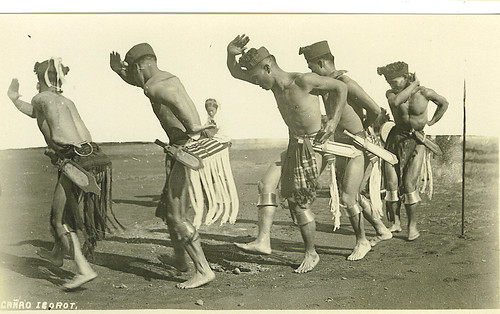
The Louisiana Purchase Exposition of 1904, also known as the St. Louis World’s Fair was an extremely large event that showcased the scientific, artistic and cultural advancements being made throughout the world at the time. Lasting from April 30 to December 1, 1904, 45 countries came from all parts of the globe to take part; many spectacles were to be seen, from new technology to vast, varying architecture of various cultures to even the introduction of new foods at the time such as cotton candy and iced tea. The fair had a significant influence in popular culture as well; the song Meet me in St. Louis, Louis by Billy Murray as well as the film titled Meet me in St. Louis starring Judy Garland both reference the Fair of 1904.

While the splendor and spectacle of the Fair certainly cast it in a positive light, there were very dark overtones in relation to the Filipino people. The 1904 World’s Fair came about at a time in US history when the United States was rapidly expanding their territories outside the US mainland.

Wanting to show its might as a nation and maybe even their advantage as a primarily white race, the United States made a huge presence in the Fair in part by showcasing what many now call a “human zoo” of the dark, indigenous people of their recent territorial acquisitions; the Philippines was one of these acquisitions.

Many Filipinos, particularly of the native tribes, were coerced into traveling to America; over 1000 Filipinos from all over the Islands left their homes and families to be put on display for the Fair for the “cultured nations” to ogle. The United States used the Fair as an opportunity to showcase their ability to supposedly bring civilization into an uncivilized nation. The Filipinos were shown in various parts of “cultural evolution” from the “civilized” city-goer from Manila to the “exotic” Igorot tribesman.

The Igorots in particular were one of the main draws of the Fair. Coming from the less developed provinces of the Philippines, they were portrayed as extremely socially backward and primitive, living half-naked in huts and eating dog meat.

One of the draws to the exhibit was the daily killing and eating of dog, a traditionally common Igorot food, in front of fairgoers. Unfortunately for the Igorots on display, the 20 dogs/day as food as laid out in their contract was insufficient, thus they started bartering w/the crowds for more dogs to eat.
The Igorots were forced to dance and sing their native rituals daily in front of an audience, reducing their once-sacred customs into mere stage shows. Images were put on display showing the deformed feet of the tree-climbing Igorots, showing the apparent lower stage of evolution in regards to other races. Perhaps this was the reason behind the main draw of the Igorot village: the fact that it causes the viewer to feel as if they are superior.

The Igorot people were treated the same way by Filipino people in the Philippines. Don't make this a white man vs the darker people of the world when the Igorot were treated far worse by average Filipinos.
ReplyDeleteWow, how would know about the Igorot people. What evidence do you have to back up your allegations. Our proof is in the pictures which speaks a for its self. The white man and the spaniards seems to have a habit of trying to assimilate other cultures and enslaving them time and time again.
DeleteAnd it is not a white man vs the darker people, it is fact. Where's yours?
DeleteHello Reynaldo, Great point! Apparently "Anonymous" is stating an opinion and not fact or an actual personal account. It's a bold statement to say that "Igorot people were treated the same way by Filipino people." Where is your proof or evidence to support such a statement or hypothesis? What is your definition of the "same way?" What do you consider to be "average Filipinos?" Who are you and what nationality are you? The latter questions will reveal the potential for your biases if you have the courage to reveal that fact. And BTW, I am PILIPINO and I come from an Igarot - Spanish heritage. The personal accounts and stories of oppression have been passed down through generations with my prominent Pilipino family. And so I ask you... Who are you?
ReplyDelete